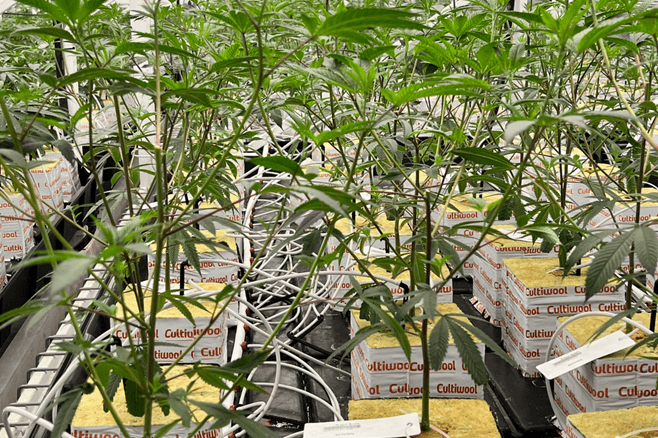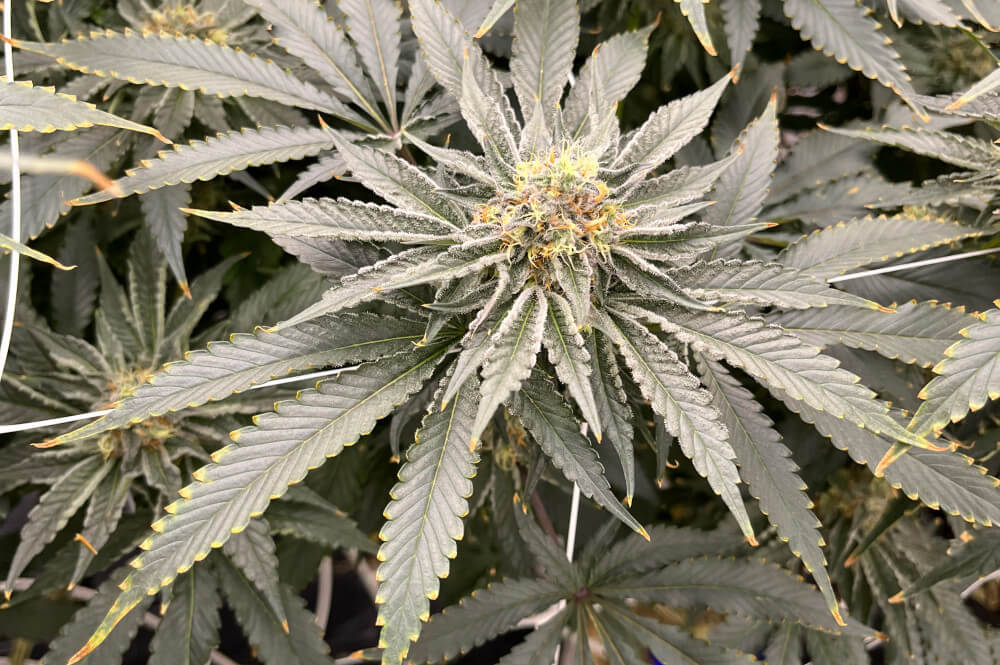![differencebetweensquareandroundpropagationplugs cultiwool[1] differencebetweensquareandroundpropagationplugs cultiwool[1]](https://www.cultiwool-substrate.com/cache/47ad34b481c7989553ac9a18715b2c49/differencebetweensquareandroundpropagationplugs-cultiwool[1].png)
What is the Difference Between Square and Round Propagation Plugs?
10 October 2024
Cultiwool Explains
From a young age, we were taught not to try to fit a square into a circle. Child games utilizing different shapes emphasized this even more with specific shaped objects only fitting in the same shaped hole. And thus comes one of the most common stone wool questions we get. Why do people use a square propagation plug (AO) when the hole in the block is round? Well, there are a couple of different reasons why one might choose to use either a square Cultiwool plug (AO) or a round Cultiwool plug (i.e., macroplug). This article will elaborate on these reasons;

Left; Cultiwool AO starter propagation plug. Right; round Cultiwool marcoplug

First of all, let's talk about what caused this confusion in the first place. Typically, once clones are rooted and ready for transplant, they are placed in a larger volume of substrate starting in a square block. The square blocks come with a plant hole which comes in a round format which is where all of the questions arise. This all then comes back to the transformation process of the large stone wool boards, which will be elaborated on later in the article. Large boards are cut down to growers' preferred sizes and processed in squares to cut down on wasted material. Once the product is cut down to its finished size it is then drilled with a round hole in the center for your clones to be placed. From a machining side of things, it makes the most sense that this hole is done with a round ‘drill bit’ which can perform this task consistently without manipulating the block's delicate shape. In simple words, it is not easy to produce a square hole.
Plug Production
To better understand why there are two options in the first place it is best to start with the production, which is also known as the transformation process of both the AO and macroplug. In the machining process, large compressed boards which are made to specific densities are essentially cut into each finished product shape. Being that these large boards start as square it is easier to calculate approximately how many finished pieces can be processed in this very large board when using a square as the finished product shape. This is important due to the reduced amount of waste material that results from the production. Imagine drawing as many circles on a sheet of paper. No matter how one arranges the circles, there will always be some not-used paper. This is what happens when processing a board for round propagation plugs.
On top of this loss of high-quality wasted material when producing the macroplug, this also has to be machined off. This process also increases the time of production in comparison to the square AO plug. Increased production time along with waste material can increase the overall cost of the final product on a larger scale. Typically round plugs will cost an end customer upwards to 30% higher per plug when compared to the square plug. To some growers, the increased cost of the plug is negligible when compared to the advantages they gain. To others who are looking to cut costs, especially with large-scale propagation, that increase in price can have a larger impact on the finances.
Nevertheless, the price should not be the only considered factor. Therefore, let's discuss more in-depth some other key differences that might influence growers' decisions.
![cloning4x4miniblock[1] cloning4x4miniblock[1]](https://www.cultiwool-substrate.com/cache/2714304a28312e550b72cb55ac5d867f/cloning4x4miniblock[1].png)
Application
Some growers express concerns primarily when the rooted square plug is being transplanted into the round hole of the square block. These concerns might originate from the feeling that while doing so, they could harm or stress the plants’ root zone, and that might decrease growth speed or worse. Nevertheless, In fact, that could be the case only in the case when transplanting takes place too late. Meaning, following our experience, and that of other professionals in the industry, when transplanting at the ‘ideal’ stage of rooting, there will be very limited to no stress. Meaning, zero signs of the plant being stunted or reducing its performance. How to indicate the perfect timing? This should be done in a timely fashion, using SOPs for the employees and staying on top of it. Some growers discuss the ease of use when it comes to the macroplug, as it fits just perfectly.
On the contrary, it does require a bit of pressure to secure the AO into place. Therefore, in the case of cultivars with very delicate stems, these may benefit from the round plug that utilizes a slit in the side for clone placement. This allows for clone placement to have very little impact when compared to inserting a clone in the pinhole of a square plug. The slit can also help monitor these delicate cultivars for visualization when rooting will occur.
Another issue that is debated in the industry, is that round plugs would encourage root development in a round direction, which does not promote healthy rooting. Even though it is debatable, it is still a concern for some.
When it comes to other eases of use, there are other aspects that growers should be comparing. Macroplugs do require some sort of insert tray to hold the clone upright during the rooting stage. Using round plugs in these types of trays can increase the chance of some drying inconsistencies due to the plug leaving air gaps between the plugs and the tray itself. In regards to a square plug, it can be placed using the whole sheet without any tray needed. Also, some growers still prefer to use a tray with the AO’s which creates a nice “seal” between the plug and the tray creating more consistent drying back of the plug. For others looking to achieve a quicker dry back, the macroplug should be considered. Each product has a different level of ease of use given your cultivation style which is the biggest concern for most operations.

Commercially speaking, on very large-scale greenhouse applications, stone wool has been used in the Netherlands by Dutch growers since the 70’s. It is believed that AO plugs became the industry standard due to years of use without any noticeable differences in growth. With operation cost being so critically evaluated the non-significance in growth could not justify the increased cost in round plugs resulting in the square plugs being adopted as the standard in the industry.
All in all, there is not a one-size-fits-all answer, and it depends on weighing the pros and cons of each individual business and cultivation practice. This is why at Cultiwool we offer both solutions to the cultivators. If you need support in any part of the process on how you can optimize your usage of Cultiwool products, or others, please reach out to ryan@babik.eu.
More items

Where can I find Cultiwool?
Discover more about our Cultiwool network



